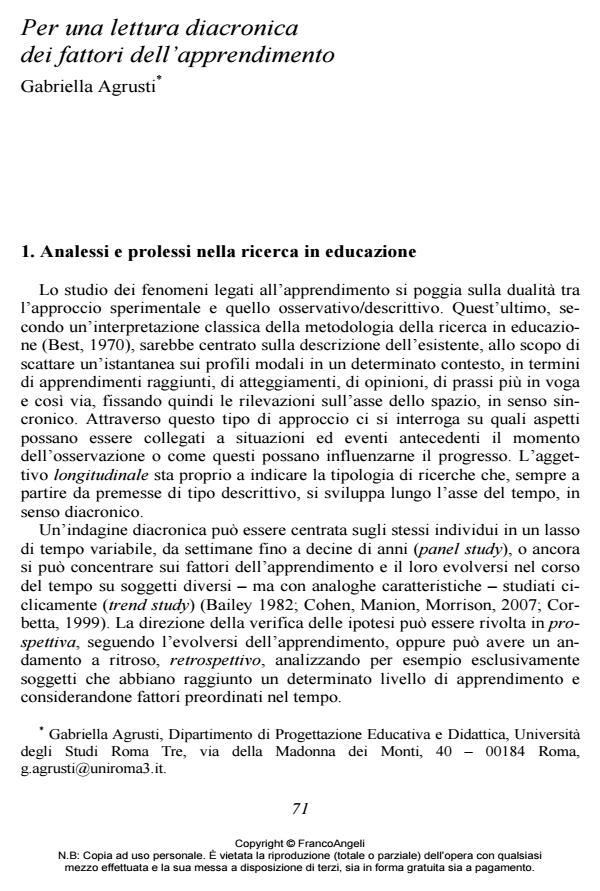A diachronic interpretation of learning factors
Journal title CADMO
Author/s Gabriella Agrusti
Publishing Year 2012 Issue 2011/2 Language Italian
Pages 14 P. 71-84 File size 204 KB
DOI 10.3280/CAD2011-002007
DOI is like a bar code for intellectual property: to have more infomation
click here
Below, you can see the article first page
If you want to buy this article in PDF format, you can do it, following the instructions to buy download credits

FrancoAngeli is member of Publishers International Linking Association, Inc (PILA), a not-for-profit association which run the CrossRef service enabling links to and from online scholarly content.
The study of phenomena related to learning is based on the duality between the experimental approach and the observational or descriptive approach. According to a classical interpretation of research methodology in education, the latter is centred on the description of reality, in order to take a snapshot of the modal profiles in a given context, in terms of learning achievements, attitudes of opinions, most popular practices and so on, thus setting the interpretations on the space axis, in a synchronic sense. Through a descriptive approach, it is possible to answer the questions about which aspects can be linked to situations and events prior to the time of observation, or how they can affect their progress. Within the am-learning project on individualisation in distance education, mainly synchronic interpretation models have been used during the stage of the measuring instruments construction and platform testing. However, innovative theoretical designs are needed, that can constitute an appropriate basis for the desired change in learning habits in the long haul. Starting from scientific literature, this paper aims at outlining some of the fundamental aspects of such diachronic modelling.
Keywords: Distance education, assessment, diachronic models, learning factors, educational research
Gabriella Agrusti, Per una lettura diacronica dei fattori dell’apprendimento in "CADMO" 2/2011, pp 71-84, DOI: 10.3280/CAD2011-002007